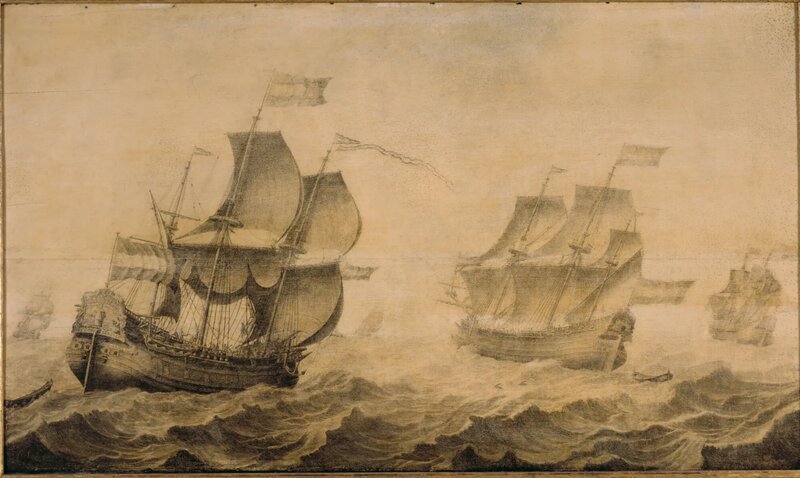- 1/1
A whaler and two flute ships. Abraham van Salm 1700-1704. Heet scheepvaart national maritime museum
Three of the crewmembers also testified that the ship belonged to Amsterdam and left the city on the 2nd of March. Their destination was Drøbak in Norway and they carried only ballast in their hold. Ballast was sand and stones used to stabilize the ship by giving the hull extra weight. They didn’t bring any merchandise to sell but were about to buy timber.
The crew came from Hindlopen in the Netherlands. They belonged to a religious movement called annabaptists. As pacifists they were prohibited from sailing with ships with gunnery. Therefore, they sailed with ships to get timber in Norway. There is not any gunnery found on the wreck site.
According to testimonies, before the ship sank the ballast had gathered in the front of the vessel, so that the bow had sunk and was pointing towards the sea bottom. It was deemed impossible to salvage anything from the ship. Further testimony described how they had managed to sail through the swells, but inshore they went aground and abandoned the ship there. People living locally had come out to help but they didn’t have enough rope to reach the ship. The crew said that the ropes were under deck so the attempt to save the ship was abandoned.
- 1/2
Jar Norsk Maritimt Museum - 2/2
Ship bell Norsk Maritimt Museum
In 2019 divers from Søgne Diving club found the wreck of Juffrau Elisabedt. Some of the artifacts were taken in to conservation at the Norwegian Maritime Museum. The wreck site is a protected cultural heritage site.
- 1/1


